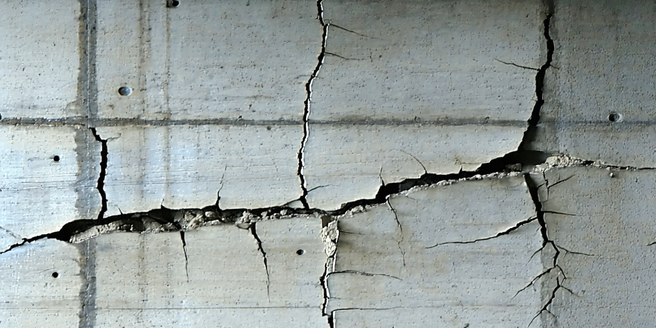Exploring Free Foundation Inspections

Understanding the Importance of Foundation Inspections
| Aspect | Importance | Description |
| Safety | High | Ensures structural integrity |
| Value | Medium | Impacts resale value |
| Maintenance | High | Prevents costly repairs |
| Longevity | High | Extends building life |
| Cost | Variable | Free options available |
| Legal | Medium | Complies with regulations |
Common Signs of Foundation Issues
Recognizing common signs of foundation issues is crucial in preventing further damage to your property. Cracks in walls, particularly those that are wider at the top or bottom, might indicate foundation movement. Additionally, doors and windows that stick or won’t open easily can be a sign of shifting foundations. Furthermore, uneven floors, often seen as gaps between interior walls and the flooring, are another indicator. If you spot any of these warning signs, it’s important to act quickly. Ignoring such signs could lead to more serious structural problems that are costly to fix. Keeping an eye on these early symptoms allows you to catch and address issues before they escalate, ensuring the safety and stability of your home.
When to Schedule a Free Foundation Inspection
Scheduling a free foundation inspection should be considered if you notice any troubling signs of potential issues, such as cracks or uneven flooring. Moreover, if you live in an area with heavy rainfall or significant soil movement, regular inspections may be beneficial. Homeowners often opt for inspections prior to major remodeling projects or renovations to ensure that the foundation can support additional loads. Also, if you’re purchasing a new home, having an inspection done can be a prudent step to confirm its structural integrity. It’s also advantageous for homes over 10 years old, as foundation wear and tear are more likely. Scheduling an inspection proactively can help avoid emergency repairs, potentially saving money in the long run.
What to Expect During a Foundation Inspection
During a foundation inspection, expect the inspector to conduct a thorough examination of both the interior and exterior of your home. Inside, they will look for signs such as cracks in the walls, uneven floors, and sticking doors or windows. Outside, they’ll inspect the foundation’s perimeter, checking for any visible cracks or signs of settlement. The inspector might also use tools like laser levels or moisture meters to measure foundation movement and detect moisture issues. After completing the inspection, they’ll provide a detailed report outlining any issues found and may offer recommendations for repairs if necessary. This transparent process ensures you understand the condition of your home’s foundation and the steps you need to take.
Key Benefits of Choosing a Free Inspection Service
Opting for a free inspection service provides several benefits, beginning with cost savings, as it removes the initial financial burden of assessing your home’s foundation. Free inspections often come with no obligation, meaning you can receive expert advice without having to commit to immediate repairs or services. These inspections are typically conducted by experienced professionals who can provide valuable insights. This provides a basis for comparing potential solutions and costs if issues are found. It also gives homeowners peace of mind, knowing that a professional has evaluated their home for potential problems. Additionally, a free inspection can serve as a preventive measure, identifying minor issues before they become major and costly repairs, thus preserving your home’s value.
How to Find Reliable Free Inspection Services
Finding reliable free inspection services involves several steps to ensure quality and trustworthiness. Begin by researching local companies, reading reviews, and checking ratings on reputable platforms. Don’t hesitate to reach out to industry forums for advice on reputable inspection services. Word-of-mouth recommendations from friends or neighbors can also be invaluable. Verify that the service company is licensed and insured, ensuring they meet industry standards. Ask for references or case studies to see examples of their past inspections. It’s also beneficial to inquire about the inspector’s qualifications and experience. Transparency and professionalism during initial contact can often signal a reliable provider. Finally, compare multiple options to ensure you’re choosing a service that is both credible and best suited to your specific needs.
Interpreting the Results of Your Inspection
When your inspection is complete, interpreting the results is an important step in determining what actions to take. Pay attention to any specific issues noted in the report, such as foundation cracks, moisture levels, or structural weaknesses. It’s crucial to address these potential problems promptly to avoid further damage. The report should help you understand the severity of these issues and whether immediate action is needed. If the recommendations include repairs, consider getting multiple quotes from contractors to compare options. If issues seem beyond comprehension, don’t hesitate to contact the inspector for clarification or further explanation. Understanding the urgency and potential impact outlined in the inspection results helps you make informed decisions and prioritize necessary repairs to maintain your home’s stability and value.
Cost Implications After a Free Inspection
While the inspection itself may be free, the cost implications after a free inspection depend on the findings. Should the inspection uncover minor issues, repairs can often be relatively inexpensive. However, more severe problems might involve significant costs for expert intervention and repair work. It’s vital to consider the long-term savings of addressing problems early against potential future expenses from delay. Homeowners should also evaluate financing options if large-scale repairs are necessary. In some cases, investing in a thorough inspection could ultimately lead to substantial cost savings in the future. Anticipating the need for investment post-inspection prepares you for managing potential expenses effectively and ensures you can maintain the essential structural integrity of your home.
Comparing Free vs Paid Foundation Inspections
Comparing free vs paid foundation inspections involves weighing several factors. Free inspections provide a no-cost option for homeowners to assess potential issues, but may not always be as comprehensive as paid services. It’s important for homeowners to research and choose the right inspection option for their situation. Paid inspections might offer more detailed reports, including advanced diagnostic tools and technologies. Additionally, the expertise and experience level of the inspector may vary between free and paid services. Free options often suit basic assessments and peace of mind, while paid services might be more suitable for complex issues or when precise documentation is needed for insurance claims or legal purposes. Ultimately, the choice depends on the homeowner’s specific needs and the scale of potential foundation problems.
Preventing Future Foundation Problems
Preventing future foundation problems involves taking proactive measures to maintain the integrity of your home. Regularly inspect and maintain your drainage systems to prevent water from accumulating around the foundation, which can weaken it over time. Address plumbing leaks immediately as moisture build-up significantly affects foundation stability. For optimal results, use quality materials and construction techniques tailored to your specific soil and climate conditions. Ensure landscaping slopes away from the foundation to facilitate proper water runoff. Consider installing moisture barriers where necessary to protect against soil expansion and contraction. Additionally, scheduling routine inspections even when no visible problems exist can catch potential issues early. These preventative steps help reinforce foundation resilience, reducing the risk of significant and costly repairs in the future.
